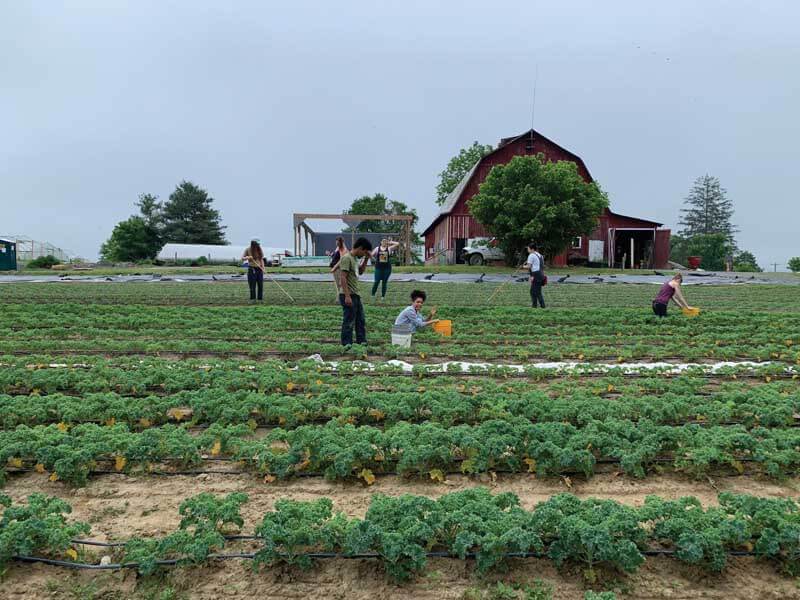WVU’s Food Justice Lab links geography and food security.
Finding food that is fresh, healthy, and affordable is a challenge for West Virginians across the state. Students and staff in WVU’s Food Justice Lab study the causes, then turn what they learn into action. “We research inequities within food systems and try to come up with ideas and solutions to help organize communities to enact change,” says Joshua Lohnes, food policy research director at the FJL.
Food insecurity isn’t a new problem. “Food issues have been brewing for over 400 years, and there is no one solution,” Lohnes says. Its root causes can differ from one time period and one community to another—cultural, environmental, economic, and political conditions can all contribute.
The FJL is housed in the Department of Geology and Geography and, while the connection between food security and geography is not immediately obvious, the lab makes the connection on its website. Food has been a basic human right under international law since 1948, the website points out, and more than 30 countries recognize the right to adequate food in their constitutions. “Our research highlights the institutional structures that fulfill or hinder this right in different places,” the site explains.
FJL staff and students ground their work in research, much of it made available to the public through its WV FOODLINK website. Among the resources it shares are profiles of each West Virginia county documenting demographics like population and income and listing food retailers and food assistance providers. And clicking on “Find Food” takes researchers, social workers, and the public to an interactive map of grocery stores, farmers markets, charitable assistance agencies, and other food sources across the state. The map details whether a retailer sells fresh produce and whether it accepts SNAP and WIC federal food assistance vouchers. “We are about the democratization of information and knowledge, and we share what we know to help others,” says Amanda Marple, the group’s education and outreach director.
Beyond research, the FJL works closely with farmers, community development organizations, and government agencies to make sense of the complex social dynamics behind food inequity. Its Nourishing Networks program has convened workshops in some of the more food insecure counties of the state—Calhoun, Fayette, Wetzel, and others. In the workshops, local stakeholders identify barriers to and resources for more equitable food distribution. Then they craft specific strategies to improve access to nutritious, affordable foods in their communities.
The group is also interested in policy solutions. “We try to change laws at state and national levels and, by doing so, try to ensure access to healthy and nutritious food for all West Virginians,” Lohnes says.
Food Justice Lab staff are hopeful for the future. The lab’s goals include continued research, new and stronger partnerships, and more training for anyone interested in learning about food system inequities. foodjustice.wvu.edu, foodlink.wvu.edu
